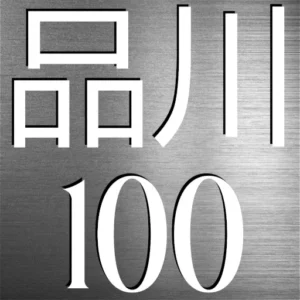Shinagawa Shrine Reitai-sai – The Stairway Festival to the Gods
Every June, the peaceful grounds of Shinagawa-jinja erupt with energy as its most dramatic ritual takes place — the Reitai-sai Festival (例大祭). This isn’t your average matsuri. Here, the shrine’s sacred mikoshi (portable shrine) is marched down a steep stone staircase by a team of shouting, synchronized carriers. It’s part faith, part strength, part adrenaline.
Known as one of Tokyo’s most exciting Shinto festivals, this event reflects the deep communal spirit of Shinagawa’s old neighborhoods. If you ever wanted to see tradition and sweat collide — this is it.
💖 What is the Reitai-sai?
The Reitai-sai is Shinagawa-jinja’s annual grand festival, held over three days in early June. It dates back to the Edo period and includes several stages:
- Yomiya (宵宮) – The festival eve, with kagura dances, lion dances (獅子舞), and a vibrant food stall village (屋台村)
- Main Day Mikoshi Procession – Featuring the shrine’s massive mikoshi paraded through local districts
- Stone Staircase Descent – The highlight event, where the mikoshi is carried down 50+ stone steps
The festival route passes through Shinbanba, Kitashinagawa, and the former Tōkaidō road. The mikoshi makes temporary stops at otabisho (rest shrines) where it is honored and handed off between local neighborhood groups. Rhythmic chants and drumming known as Shinagawa Byōshi (品川拍子) help pace the procession and fire up the crowd.
🎨 The Legendary Staircase Descent
The steep stairway in front of Shinagawa-jinja is usually peaceful. But during Reitai-sai, it becomes a test of balance, unity, and strength. With careful choreography, over a dozen carriers lower the massive mikoshi down each step — chanting and pulsing with energy.
One slip could end the parade, but the tradition continues every year — a daring performance of faith that’s become an icon of local pride.
🌸 Community Spirit and Festival Culture
Children carry their own mikoshi. Some neighborhoods decorate floats called hoko (鉾), a remnant of older Edo customs. Residents gather outside with water, snacks, or towels — a hospitality custom known as omotenashi that turns this festival into a true community affair.
The festival grounds also host a bustling yatai-mura (food stall village) offering grilled corn, takoyaki, and goldfish scooping games. Traditional shishi-mai (lion dances) are performed to entertain the kami and drive away misfortune. And everywhere you go, you’ll hear the rhythmic clap and chant of the Shinagawa Byōshi — a proud cultural trademark of the ward.
With its deep ties to the past and dynamic local support, this festival is more than a spectacle — it’s Shinagawa remembering who it is.
Typical Festival Foods
| 🐙 たこ焼き (Takoyaki) | Crispy on the outside, gooey on the inside — octopus balls are a must-have at any matsuri. |
| 🥔🧈 じゃがバタ (Jagabatā) | Hot jacket potatoes slathered in melting butter — simple, salty, and satisfying. |
| 🍰 ベビーカステラ (Baby Castella) | Sweet, fluffy mini sponge cakes — loved by both kids and nostalgic grown-ups. |
| 🐟🔥 鮎の塩焼き (Ayu no shioyaki) | Grilled sweetfish served whole and salted — a fragrant treat of Japanese summer. |
| 🥟 シャーピン (Shāpin) | Crispy, chewy stuffed flatbreads inspired by Chinese street food — a savory surprise. |
| 🍳 お好み焼き (Okonomiyaki) | A savory pancake packed with cabbage, eggs, and your choice of toppings — cooked right on the griddle. |
| 🍭 わたあめ (Watagashi) | Cotton candy in pastel colors — spun sugar clouds that melt on your tongue. |
| 🍌🍫 チョコバナナ (Chokobanana) | Chocolate-dipped bananas on sticks — sweet, shiny, and always popular with kids. |
| 🍢 串焼き (Kushiyaki) | Various meats and veggies skewered and grilled over flames — classic festival fuel. |
| 🍜 焼きそば (Yakisoba) | Stir-fried noodles in rich, tangy sauce — served steaming hot and fast. |
🌀 Shrine Details
- Main Shrine: Shinagawa-jinja
- Festival Date: Early June (typically first weekend)
- Key Feature: Mikoshi descent down stone stairs
- Founded: 1187 CE
This festival, alongside Daidai Kagura and Oharai rites, is one of three key spiritual events at Shinagawa-jinja. Its combination of movement, music, and raw emotion make it unforgettable.
📍 Visitor Information
Address: 3-7-15 Kita-Shinagawa, Shinagawa-ku, Tokyo 140-0001
Best time to visit: Festival main day – early June
Admission: Free
Official Info: https://shinagawajinja.tokyo/
Where is it?
| what3words | ///shopping.downward.petted |
| latitude longitude | 35.6179177 139.7379243 |
| Nearest station(s) | Shinbanba Station (Keikyū Main Line) Kitashinagawa Station (Keikyū Line) |
| Nearest public conveniences | Within the Shinagawa Shrine |
Show me a sign.

Withervee says…
Reitai-sai Festival Mikoshi
This isn’t a polite, bow-and-whisper kind of shrine visit. It’s loud, messy, and full of sweaty magic. The Reitai-sai is like watching history with a pulse — and it pounds.
Usually, the Naka-mikoshi (medium portable shrine) is carried through the shrine. However, if the Imperial Family is celebrating an event during the year the O-mikoshi (large portable shrine) is carried. The last time was in 2019 to celebrate the current the Emperor’s accession to the throne. This was the first time for 12 years.
Site Character
- Lifestyle 生活 (Seikatsu): ✔️
- Historical Significance 歴史 (Rekishi): ✔️
- Atmosphere/Natural Features 風土 (Fūdo): ✔️
Who in their right mind would vote for this?
- Local (Shinto) believers
- Festival thrill-seekers
- Traditionalists with earplugs
- Kids with paper fans
- Mikoshi-carrying maniacs
Further reading
Reitai-Sai at Shinagawa-Jinja’s Site (Japanese)

